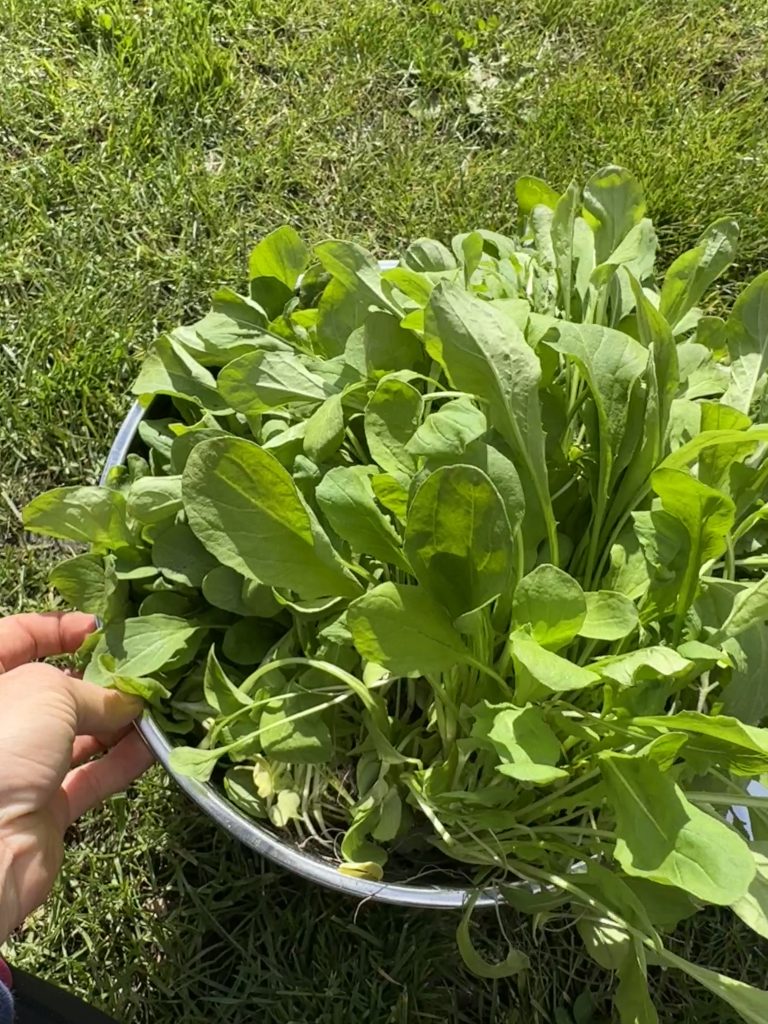You don’t need an entire lettuce garden to get great lettuce
Lettuce is one of the most popular leafy greens for home gardens. Thankfully, this versatile vegetable thrives when grown in the ground, in raised garden beds, or even in little containers on your back porch. Growing lettuce in raised beds or pots allows you to control the soil needs, however. Which enables you to grow fast-growing, tasty lettuce varieties all season.
This guide will cover everything you need to know about successfully raising lettuce, from soil prep to seed starting to harvesting. You’ll learn simple techniques to produce abundant, nutrient-packed greens. After reading this you’ll be growing such crispy, delicious lettuce you wont ever have need for a lettuce crisper again. Get ready to enjoy fresh, homegrown lettuce from your own backyard.

Lettuce Varieties for Raised Beds
Lettuce comes in a wide array of varieties that feature different textures, shapes, and flavors. When grown in raised beds, some top varieties to try include:
- Romaine – Tall heads with crisp center ribs, popular choice for Caesar salads
- Red Sails – Frilly green leaves with deep red tinting
- Oakleaf – Shaped like oak leaves, tender with a mellow flavor
- Buttercrunch – Soft green bibb-type leaves, sweet taste
- Black Seeded Simpson – Loose leaf lettuce with ruffled leaves
- Little Gem – Mini cute heads, perfect for sandwiches and side salads
- Jericho – Heat-resistant Romaine type, slow to bolt
- Salad Bowl – Big, loosely packed leaves, versatile performer
Mix it up and grow a few different lettuce varieties to keep your salad bowls interesting. The options are nearly endless when it comes to lettuce types.

Soil needs – proper soil helps nourish your plant
Lettuce thrives in nitrogen-rich, loose soil that drains well. Raised garden beds allow you to create the ideal soil composition that keeps lettuce happy. Mix together high-quality organic potting soil with compost and a little sand or perlite to improve drainage. The soil should crumble easily when squeezed.
Before planting, use a rake to create seed furrows and smooth and level the bed. Lettuce prefers a soil pH between 6.0 to 6.8. Test your soil and amend as needed to reach this optimal acidity range.
Lettuce grows best in full sun to partial shade. Make sure your raised bed gets at least 6 hours of direct sunlight daily. Sheltered beds may produce looser heads, so select the sunniest location possible.
Lettuce: when to plant.
One key to growing delicious lettuce is timing your planting properly. Lettuce thrives in cool weather. Plant seeds directly in raised beds 2-4 weeks before your region’s last expected frost date. This ensures lettuce will mature during optimal cooler conditions versus summer’s heat.
You can sow seeds again every 2-3 weeks to enjoy successive lettuce harvests all season long. Just make sure each planting matures before temperatures climb above 75*F. As lettuce nears full size, hot weather causes bitter flavor and bolting. If you are still unsure about when to plant lettuce, check out this handy guide. Pages 11 and 12 have exact times for planting and harvesting all sorts of plants. Lettuce included.
How to Plant Lettuce Seeds
The easiest method for planting lettuce seeds is sowing them directly into raised beds instead of starting seedlings indoors. Here are simple steps for planting lettuce by seed:
1. Prepare loose, crumbly soil mixed with compost at least 6 inches deep. Smooth and create furrows.
2. Sow seeds 1’4′ inches deep down the furrow, patting gently to cover. Space 2-4 inches apart depending on variety’s mature size.
3. Water gently daily with a sprinkler. Never blast seedlings with heavy watering pressure.
4. Once sprouts appear in about 7-14 days, thin overcrowded seedlings.
5. Apply organic balanced fertilizer per package instructions.
Lettuce seeds need consistent moisture to germinate and grow properly. Gently hand water daily until established instead of relying on overhead watering. Installing drip irrigation in beds simplifies watering. Fully mature lettuce requires about 1 inch of water weekly.
Care Tips for Healthy Lettuce Growth
Lettuce grows rapidly in raised beds, maturing quickly in 45-60 days. Give your lettuce attentive care, and you’ll be rewarded with bountiful harvests:
- Water frequently, up to daily, in hot weather. Drought-stressed lettuce becomes bitter and bolts.
- Apply organic nitrogen fertilizer every 2-3 weeks per package instructions. This fuels leafy growth.
- Weed carefully by handpicking instead of hoeing around delicate lettuce.
- Side dress growing lettuce with extra compost or organic fertilizer.
- Mulch beds to retain moisture and reduce weeds. Leave space around seedlings.
- Thin crowded seedlings for optimal growth.
How to Harvest Crisp Lettuce
One of the joys of growing lettuce in raised beds is getting to enjoy fresh picked greens. Time your harvests early in the morning:
- Harvest loose-leaf varieties by picking outer leaves only. This allows the plant to continue producing.
- Harvest heading varieties by cutting the entire head slightly above soil level once it reaches the desired size. Use a sharp knife for clean cuts.
- Pick lettuce before the weather heats up to prevent bitterness and bolting. Hot temperatures stop sweet flavor production.
- Time for second plantings to continue harvesting lettuce as the season progresses.
Simple Salad Garden Designs – succession planting or companion planting
Raised beds lend themselves perfectly to creating bountiful salad gardens. You can dedicate a full bed solely to growing lettuce and other greens for huge harvests. Or you can incorporate lettuce into vegetable bed plans by alternating quick-growing lettuce plants with deeper-rooted vegetables.
Some ideas for maximizing lettuce yields from small spaces:
– Plant colorful green, red, and oakleaf lettuces together for pretty mixed salad greens.
– Alternate different lettuce varieties with baby spinach, arugula, kale, and chard.
– Succession plant heat-resistant varieties to harvest lettuce all summer.
– Intercrop fast-growing lettuce with slower vegetables like carrots, onions, and peppers.
– Plant edible flower seedlings like nasturtiums around lettuce for bonus salad add-ins.
You can create a high-yield micro lettuce farm at home by thoughtfully arranging a diversity of greens in raised beds. You can learn more about this concept and gardening method here.
Troubleshooting Lettuce Issues
Lettuce is relatively easy to grow but occasionally faces pests, disease, and bolting issues. Here is how to resolve the most common problems:
- Pests: Aphids, slugs, snails, beetles, and caterpillars sometimes attack lettuce. Remove by hand or use organic sprays derived from plants as needed. Floating row covers prevent insect issues.
- Diseases: Fungal diseases like downy mildew, leaf spot, and rot can occur. Improve air circulation and avoid wetting foliage. Remove affected leaves promptly.
- Bolting: Lettuce forms a seed stalk (bolts) when exposed to sun/heat before optimal maturity size. This makes leaves bitter. Grow more heat-resistant varieties, maintain even soil moisture, and mulch beds to prevent bolting.
- Tip Burn: Hot weather causes dried, brown leaf edges. To prevent tip burn, ensure consistent moisture and provide shade covers.
Enjoy Growing Lettuce from Seed to Salad
Lettuce of all types thrives when grown in raised garden beds. Follow this complete growing guide for the know-how to raise impressive lettuce crops all season long in a small space. Homegrown lettuce tastes superior to store-bought greens, and growing your own is very rewarding. The entire process-from sowing seeds, nurturing seedlings, and biting into that first sweet, crispy leaf you grew yourself-feels incredibly satisfying. With a bit of practice, you’ll master growing lettuce successfully. Soon, your family and frie
